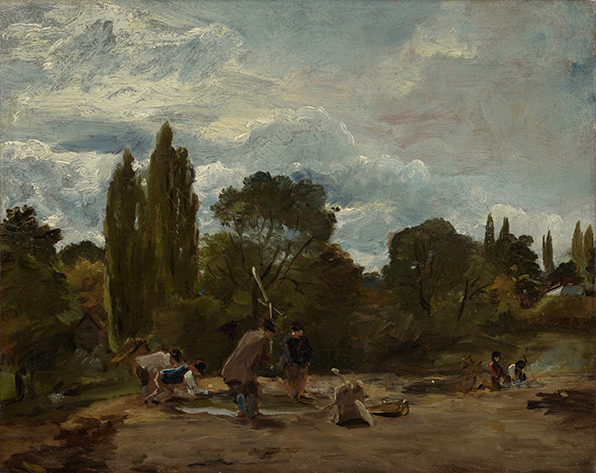
DECEMBER 15, 2018–MARCH 10, 2019
LABORERS IN THE LANDSCAPE
John Constable (English, 1776–1837), Flailing Turnip Heads, East Bergholt, c. 1812–15. Oil on canvas. Clark Art Institute. Gift of the Manton Art Foundation in memory of Sir Edwin and Lady Manton, 2007.8.25
Laborers—ploughmen, shepherds, laundresses, fishermen, sailors, and the like—populate many of Turner’s and Constable’s landscapes and seascapes. The workers’ presence animates the natural world observed and depicted by each painter, underscoring the potential productivity of the land and sea. They humanize vast spaces, whether they are familiar, in the case of Constable’s native county of Suffolk, or foreign, as for Turner, an inveterate traveler who visited Europe many times over the course of his career.
Whether quickly indicated with the briefest daubs of paint or idealized by the artist, the laborer’s actual working and living conditions are often not apparent. Contemporary accounts reveal difficult working conditions and the extreme poverty of agricultural workers, for example. The laborer's presence invites the observer to consider how the environment shaped them, and how they, in turn, influenced their surroundings. The ways in which Turner and Constable rendered these figures within their landscapes may also shed light on how they viewed the worker as well.

